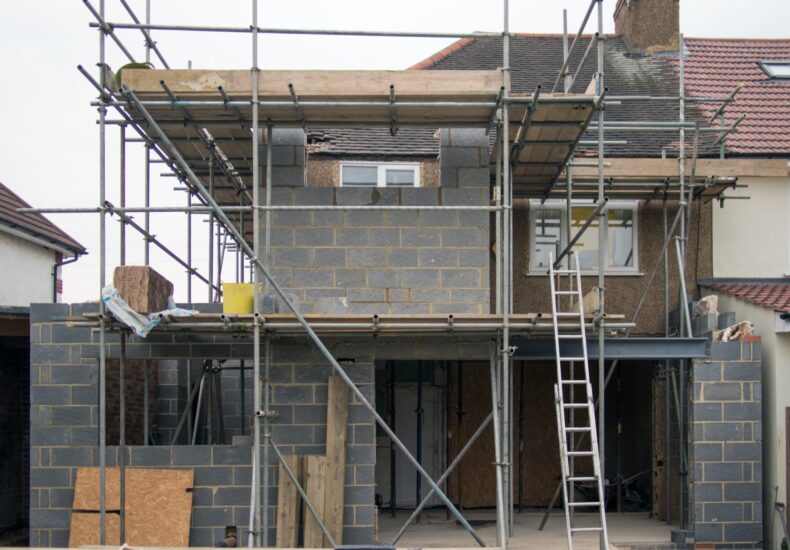
Sustainable Insulation is an essential component of any UK home, providing a barrier against heat loss or gain. It is designed to trap heat inside during cold weather and prevent heat from penetrating the walls during hot weather, creating a comfortable living environment for homeowners. With sustainable insulation, homeowners can save a significant amount of money on their energy bills while reducing their carbon footprint. In this article, we will explore the benefits of insulation in a UK home and outline different types of sustainable insulation.
Energy Efficiency
One of the most significant benefits of insulation in a home is that it improves energy efficiency. Insulation prevents heat loss during the winter, keeping the home warm and reducing the need for heating. It also prevents heat gain during the summer, keeping the home cool and reducing the need for air conditioning. With proper insulation, UK homeowners can save a significant amount of money on their energy bills, reducing their carbon footprint and contributing to a more sustainable future.
Noise Reduction
Insulation also helps to reduce noise levels inside the home. Insulated walls, ceilings, and floors absorb sound waves, reducing the amount of noise that enters the home. This is particularly useful for homeowners who live in noisy areas or have noisy neighbours. Insulation can create a peaceful and quiet living environment, making it easier to relax and enjoy time with family and friends.
Improved Air Quality
Insulation can also improve air quality inside the home. By reducing drafts and air leaks, insulation can help to prevent the infiltration of allergens and pollutants, improving indoor air quality. This is particularly beneficial for homeowners who suffer from allergies or respiratory conditions.
Increased Home Value
Insulation can also increase the value of a home. Potential buyers are often willing to pay more for a home with good insulation because they know that they will save money on energy bills and enjoy a more comfortable living environment. Insulation can also make a home more attractive to buyers by improving its energy efficiency and reducing its carbon footprint.
Traditional types of Insulation
Fiberglass Insulation
Fibreglass insulation is one of the most popular types of insulation used in UK homes. It is made from thin glass fibre’s that are spun into a wool-like material. Fibreglass insulation comes in rolls or batts and is installed between wall studs, attic rafters, and floor joists. Fibreglass insulation is relatively inexpensive, easy to install, and offers good thermal insulation properties, although it one of the least eco friendly. The cost of fibreglass insulation typically ranges from £0.10 to £0.40 per square foot.
Spray Foam Insulation
Spray foam insulation is a type of insulation that is sprayed into walls, ceilings, and attics using a special machine. It expands to fill gaps and creates an airtight seal, providing excellent thermal insulation properties. Spray foam insulation is more expensive than other types of insulation but offers superior energy efficiency benefits. The cost of spray foam insulation typically ranges from £0.80 to £2.00 per square foot.
Top 4 Sustainable Insulation Types
Insulation is a vital component in any sustainable building design. It helps to reduce energy consumption, lower carbon emissions, and create a comfortable living environment for the occupants. While there are several insulation materials available in the market, some are more sustainable than others. Below we will discuss the top 4 most sustainable insulation options available in the UK.
Sheep Wool Insulation
Sheep wool insulation is a natural and renewable insulation material that is environmentally friendly. It is made from the wool of British sheep, which is treated with a natural fire retardant. Sheep wool insulation is non-toxic, biodegradable, and sustainable. It also has excellent thermal insulation properties and can help to reduce energy consumption in the building. The only downside is that it is relatively expensive compared to other insulation materials.
Cellulose Insulation
Cellulose insulation is made from recycled paper that is treated with fire retardant chemicals. It is blown into walls, ceilings, and attics using special equipment. Cellulose insulation is an eco-friendly option and offers good thermal insulation properties. It is also effective at reducing noise levels inside the UK home. The cost of cellulose insulation typically ranges from £0.15 to £0.60 per square foot
Cork Insulation
Cork insulation is made from the bark of cork oak trees. The bark is harvested every 9-12 years, making it a renewable and sustainable resource. Cork insulation has excellent thermal insulation properties, is fire-resistant, and is resistant to mould and mildew. It is also a natural sound insulator, making it an ideal choice for soundproofing. However, it is more expensive than some other insulation materials.
Hemp Insulation
Hemp insulation is made from the fibres of the hemp plant. It is a natural and renewable insulation material that has excellent thermal insulation properties. Hemp insulation is also fire-resistant, resistant to mould and mildew, and non-toxic. It is easy to install and has a long lifespan. However, it is relatively new in the market and may not be widely available in all areas.
When it comes to sustainable insulation, there are several options available. Sheep wool insulation, recycled newspaper insulation, cork insulation, and hemp insulation are some of the most sustainable insulation materials available. They are environmentally friendly, renewable, and have excellent thermal insulation properties. By choosing sustainable insulation materials, we can reduce our carbon footprint, lower energy consumption, and create a more sustainable future.

